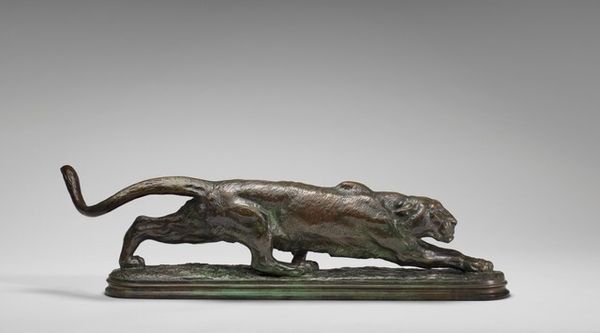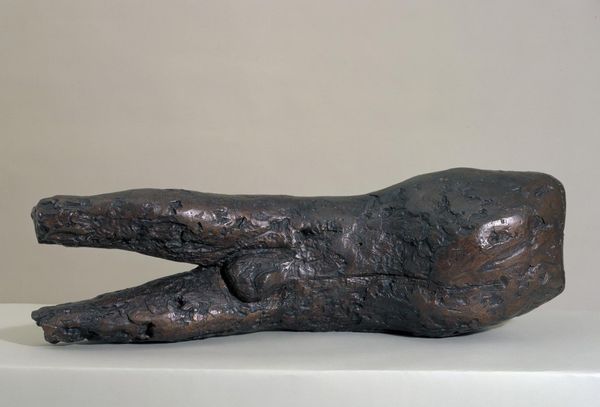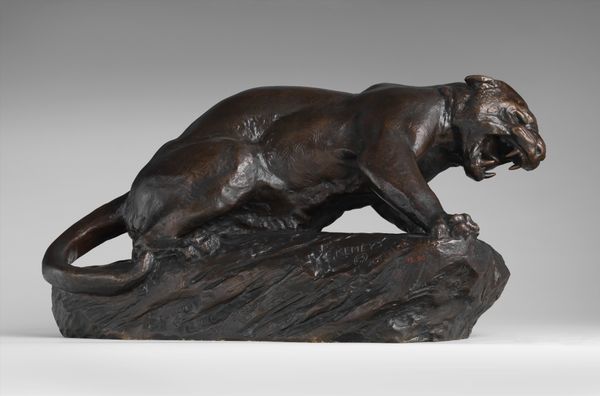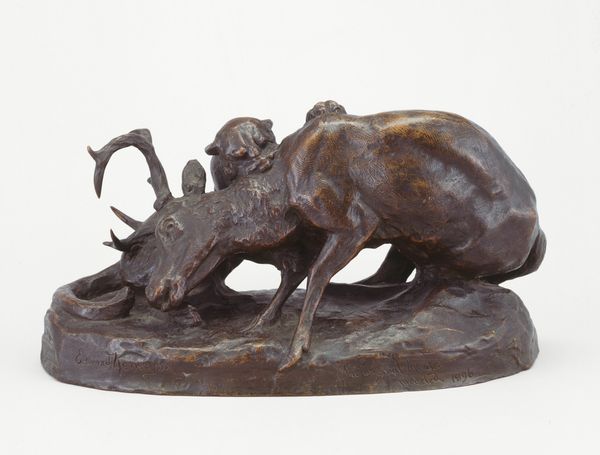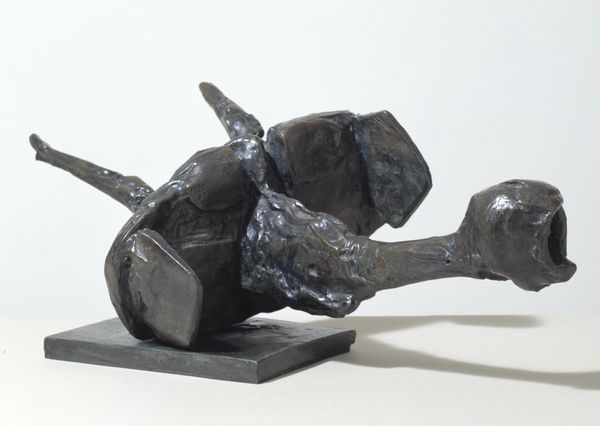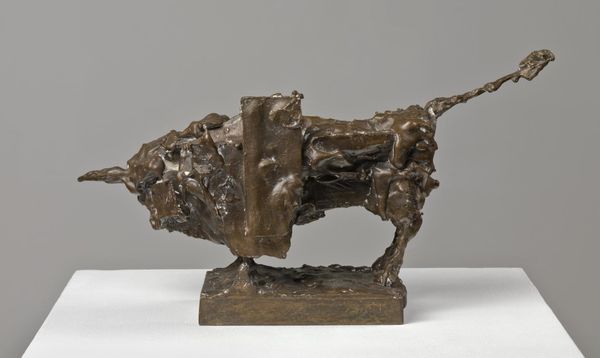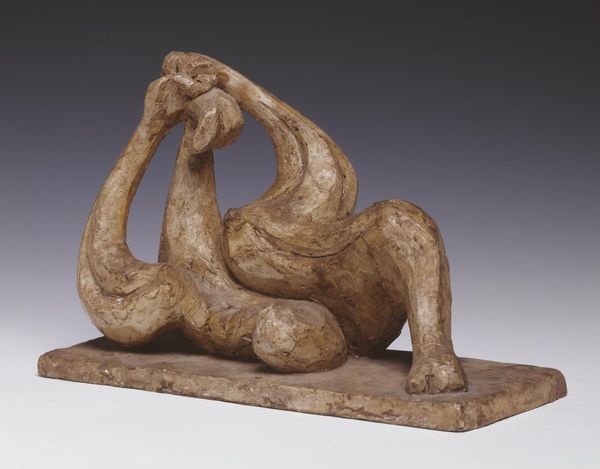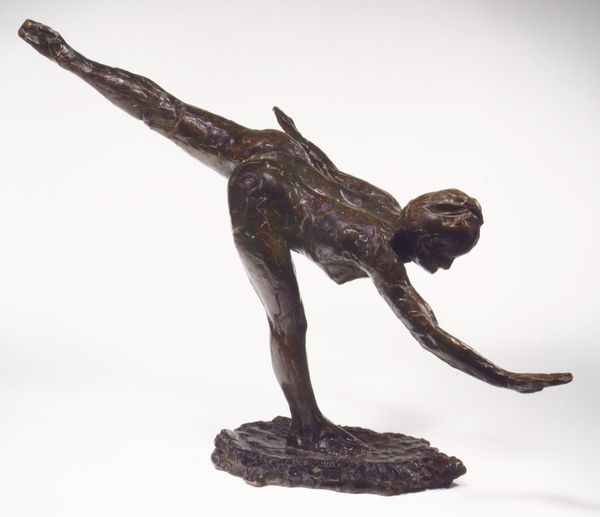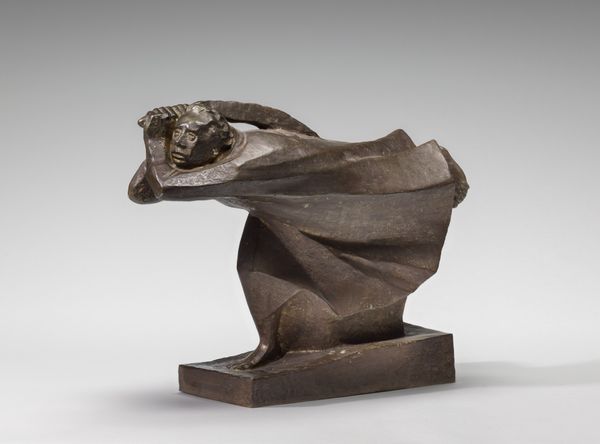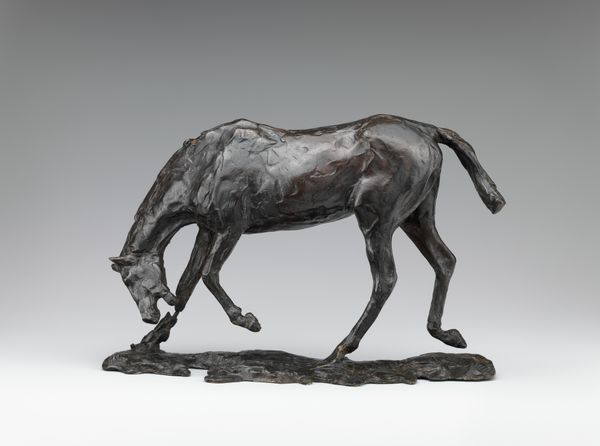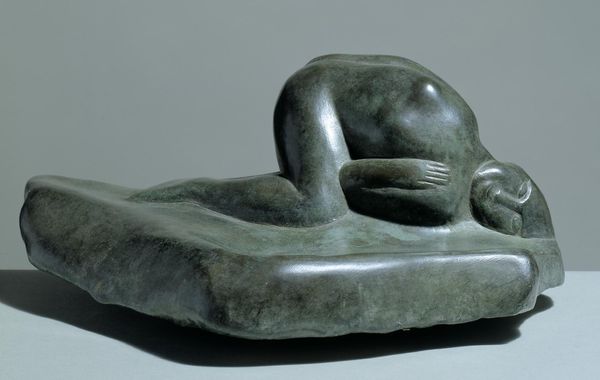
bronze, sculpture
#
animal
#
sculpture
#
bronze
#
figuration
#
sculpture
#
realism
Dimensions: overall: 24.13 × 97.16 × 16.51 cm (9 1/2 × 38 1/4 × 6 1/2 in.) base: 87 × 16.51 cm (34 1/4 × 6 1/2 in.)
Copyright: National Gallery of Art: CC0 1.0
Curator: Wow, this bronze sculpture immediately brings a hush to the room, doesn't it? The form is deceptively simple, but the implied energy is intense. What’s your take, Editor? Editor: There’s a stillness, yes, but one charged with intent. This creature by Alexander Phimister Proctor, made between 1893 and 1898 and titled simply *Panther*, feels more like a coiled spring than a predator at rest. Proctor captured a profound sense of restrained power. It's a study in feline grace, but you sense the lethal force beneath the surface. How do you think Proctor’s understanding of animal anatomy plays into this effect? Curator: Hugely. Proctor lived amongst the animals; he truly studied them, in their habitat, to find their gesture of intention. To create that illusion, Proctor undoubtedly also benefited from growing public interest in, and anxiety about, the place of nature and natural environments within increasingly urbanized settings. We were at once more enamored and more separated. Editor: Absolutely. These animalier bronzes became very popular as home decor. It gave urban populations some connection to wildlife. But in so doing, were museums, artists and others promoting the idea of “civilized man” having dominion over wild nature? Curator: It is something to contemplate. But in some ways, there's almost a hint of tragedy in its posture. Proctor, having observed them in the wild, seems to suggest a sense of loneliness even within the panther's inherent power, as though there is a void between potential action and the reality of survival. Do you think there is an environmental message present in these images as well? Editor: Certainly. By presenting wild creatures as collectible objects within a domestic space, are we inadvertently framing nature itself as something to be owned, controlled, perhaps even diminished? Curator: Perhaps that disquiet, Editor, that very uneasiness you just spoke about, is itself a part of the power of *Panther*—a reminder of the wild spaces disappearing from our grasp and maybe, too, from our hearts. Editor: A potent thought! These bronze figures allowed wealthy patrons to contemplate the sublime without venturing far from their city homes. Something for us to consider when the sublime needs no gatekeeper.
Comments
No comments
Be the first to comment and join the conversation on the ultimate creative platform.
